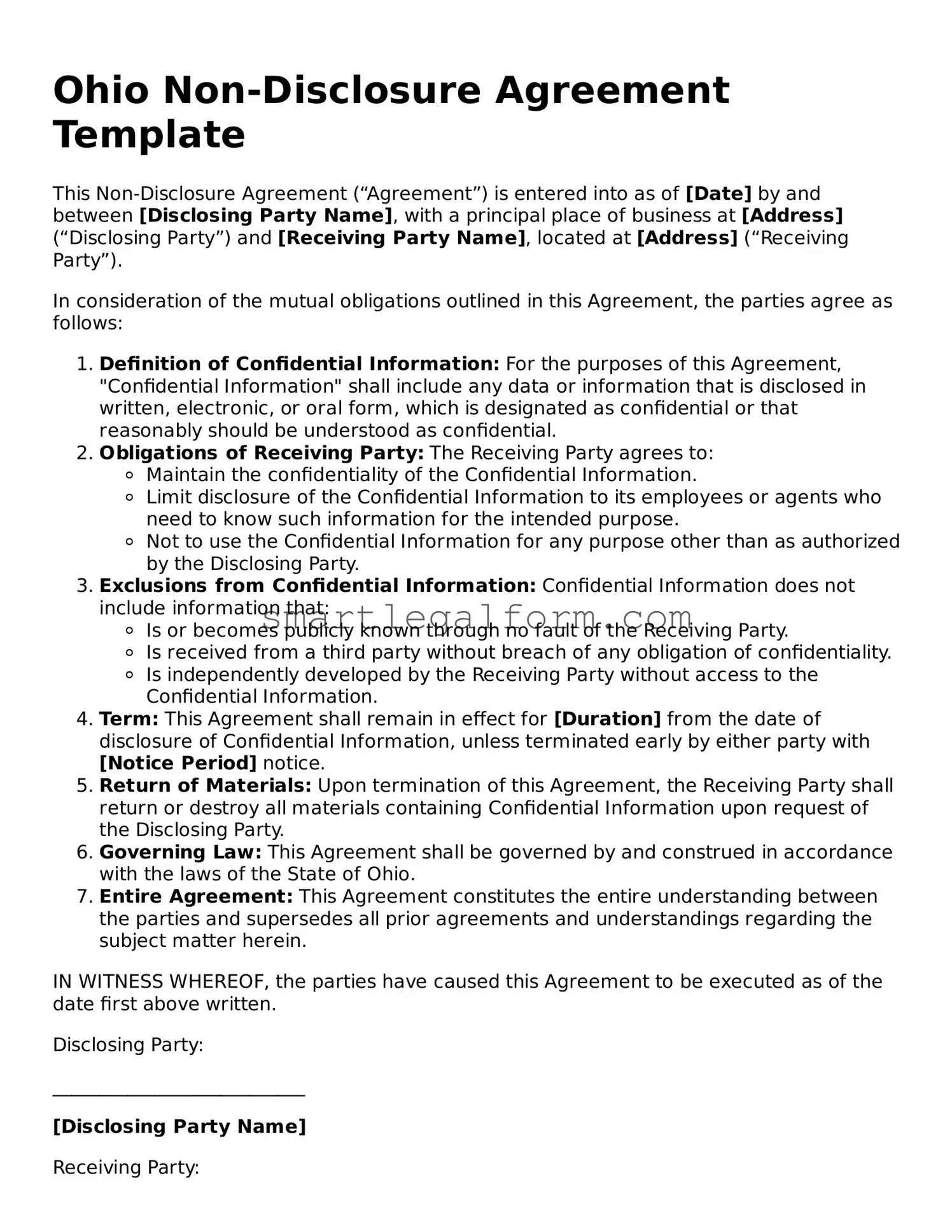Ohio Non-Disclosure Agreement Template
This Non-Disclosure Agreement (“Agreement”) is entered into as of [Date] by and between [Disclosing Party Name], with a principal place of business at [Address] (“Disclosing Party”) and [Receiving Party Name], located at [Address] (“Receiving Party”).
In consideration of the mutual obligations outlined in this Agreement, the parties agree as follows:
- Definition of Confidential Information: For the purposes of this Agreement, "Confidential Information" shall include any data or information that is disclosed in written, electronic, or oral form, which is designated as confidential or that reasonably should be understood as confidential.
- Obligations of Receiving Party: The Receiving Party agrees to:
- Maintain the confidentiality of the Confidential Information.
- Limit disclosure of the Confidential Information to its employees or agents who need to know such information for the intended purpose.
- Not to use the Confidential Information for any purpose other than as authorized by the Disclosing Party.
- Exclusions from Confidential Information: Confidential Information does not include information that:
- Is or becomes publicly known through no fault of the Receiving Party.
- Is received from a third party without breach of any obligation of confidentiality.
- Is independently developed by the Receiving Party without access to the Confidential Information.
- Term: This Agreement shall remain in effect for [Duration] from the date of disclosure of Confidential Information, unless terminated early by either party with [Notice Period] notice.
- Return of Materials: Upon termination of this Agreement, the Receiving Party shall return or destroy all materials containing Confidential Information upon request of the Disclosing Party.
- Governing Law: This Agreement shall be governed by and construed in accordance with the laws of the State of Ohio.
- Entire Agreement: This Agreement constitutes the entire understanding between the parties and supersedes all prior agreements and understandings regarding the subject matter herein.
IN WITNESS WHEREOF, the parties have caused this Agreement to be executed as of the date first above written.
Disclosing Party:
___________________________
[Disclosing Party Name]
Receiving Party:
___________________________
[Receiving Party Name]
